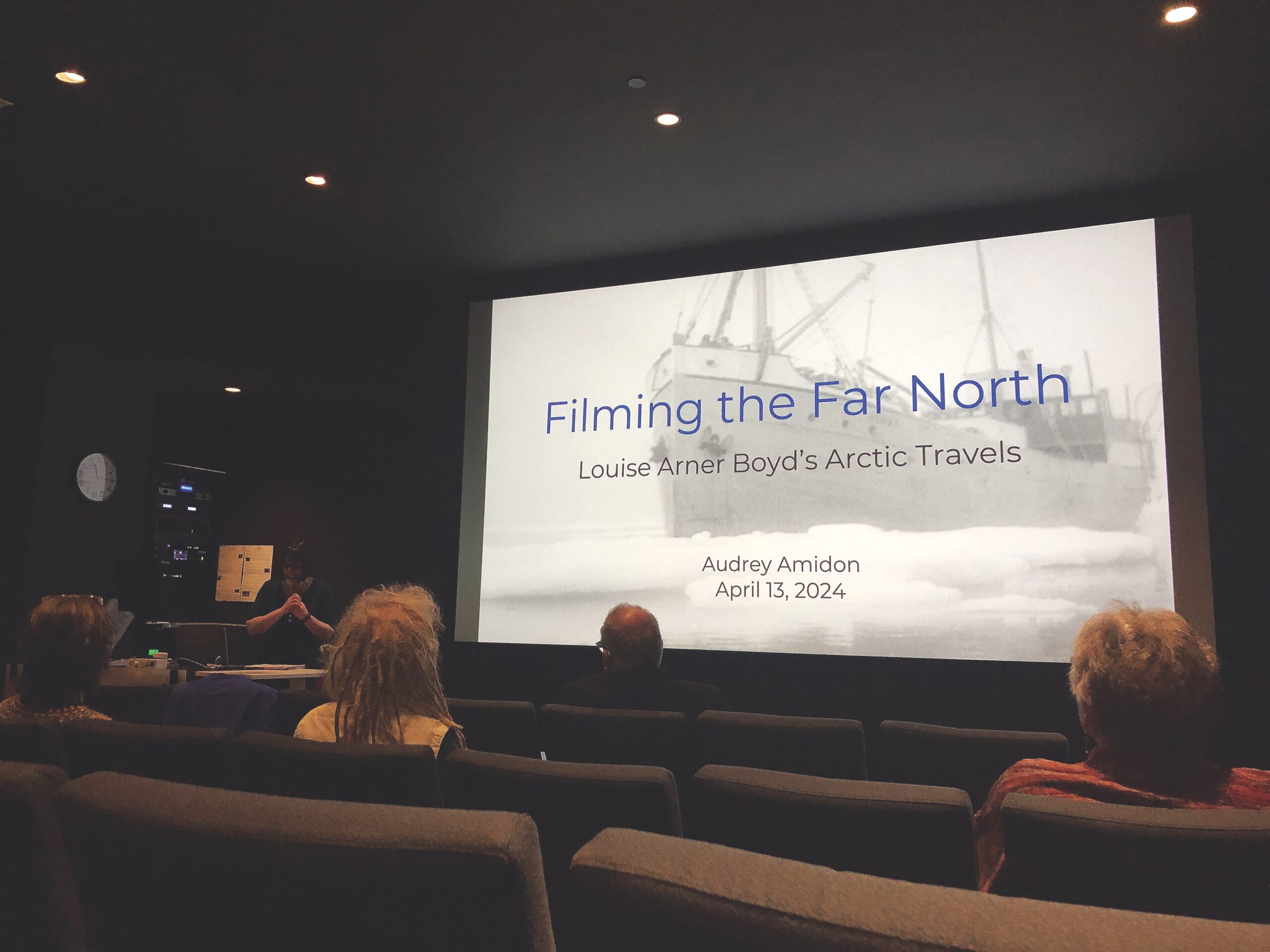Arctic Museum screens rare archival footage
April 19, 2024
 Courtesy of Rebecca LaPoint
Courtesy of Rebecca LaPointFootage from over 100 years ago and over 1,000 miles north captivated visitors at the Peary-MacMillan Arctic Museum’s “Reframing Historic Arctic Films” festival last weekend. From Thursday to Sunday, films featuring floating icebergs, dogs racing in the snow and frost-covered eyelashes and beards brought stories of far-off expeditions to a sunny Brunswick weekend.
The film festival featured a series of lectures on and screenings of newly recovered and rarely seen archival films of the Arctic, including Donald MacMillan’s footage of the 1913-1917 Crocker Land Expedition and work by contemporary Inuit filmmakers.
Genny LeMoine, the curator of the Arctic Museum, organized the festival, bringing together scholars and filmmakers who have newly contextualized archival works. LeMoine was excited to introduce visitors to films with which she has worked extensively .
“They all have very interesting and different things to talk about,” LeMoine said. “My sense when I see people watch these films is that people are entranced with them. We look at them so often here.… They’re fascinating on many, many different levels, and I think people will be maybe surprised at them and hopefully delighted.”
The film festival began on Thursday evening with a talk by Mindy Johnson, a film historian who has studied the animations of Bessie Mae Kelley. Kelley drew title slides and maps for MacMillan’s films in the early 20th century. Her recovered hand-drawn animations are the earliest of their kind known to be drawn by a woman. Johnson, who works in Los Angeles, reached out to the Arctic Museum, hoping to share her findings.
“We have the earliest animated maps of the Arctic, all created by Bessie May Kelley.… She’s one of the very few in the world trained and equipped to be creating these,” Johnson said. “A cartoonist is a very rare thing for a woman to do in that day and age. But there she is, and she’s quite accomplished in what she does.”
Last Friday evening and Saturday afternoon, Mark Turner, a historian and media archivist, spoke about often uncredited Inuit contributions to archival footage. The films of two more recent Inuit artists—Holly Andersen’s “Hebron Relocation” and Assinajaq’s “Three Thousand”—were screened on Friday evening.
“They’re both young women who have been using archival footage in their films, since the focus of our film festival is archival footage. I don’t imagine anyone here will have seen them [before],” LeMoine said.
On Saturday morning, Audrey Amidon ’03 spoke on the films of Louise Boyd, who ventured on Arctic expeditions from the 1920s through the 1940s and covertly worked for the U.S. Army on expeditions during World War II. Presenting Boyd’s work, Kelley’s animations and films by contemporary Indigenous women allowed the Arctic Museum to highlight often overlooked voices in Arctic studies.
“One of the things we’re trying to focus on is the missing people associated with these films. So, women written out of the record … and then of course the Inuit who appear in the films,” LeMoine said.
On Saturday afternoon, Susan Kaplan, professor of anthropology and director of the Peary-MacMillan Museum and the Arctic Studies Center, contextualized newly recovered films shot by MacMillan in the 1910s. These films are some of the earliest surviving footage from Greenland and depict daily life on the voyage.
A number of the clips were tinted blue or green to lend to symbolism of the rugged outdoors. Others show puppies frolicking (Kaplan noted MacMillan’s love for dogs). A number of clips showed ships nearing contact with icebergs.
“Boy, if I was on a vessel and the captain started to get that close [to an iceberg], I don’t know if I’d be happy!” Kaplan said. “But MacMillan was fearless and he knew what he was doing.… He’s playing with texture and light. This is pretty amazing footage.”
Cynthia Howard ventured to campus from Biddeford on Saturday to see footage of the Crocker Land Expedition. Her father was the youngest to go north on MacMillan’s voyage—at only 15 years old—and her grandparents outfitted many of the canned goods for the expedition.
“I grew up taking these souvenirs to show and tell,” Howard said. “I’ve never seen this stuff before outside of photographs. These are fantastic.”
The Arctic Museum’s archives hold many hours of such films, which are accessible for work by students and classes and often play in the museum’s exhibits. LeMoine was excited to share new clips of the film with a broader public.
“It’s now accessible in a way that it never ever has been,” she said. “It does make us unique. MacMillan’s film is unique because he just spent so much time in the community, he could film in a more candid way.”

Comments
Before submitting a comment, please review our comment policy. Some key points from the policy: